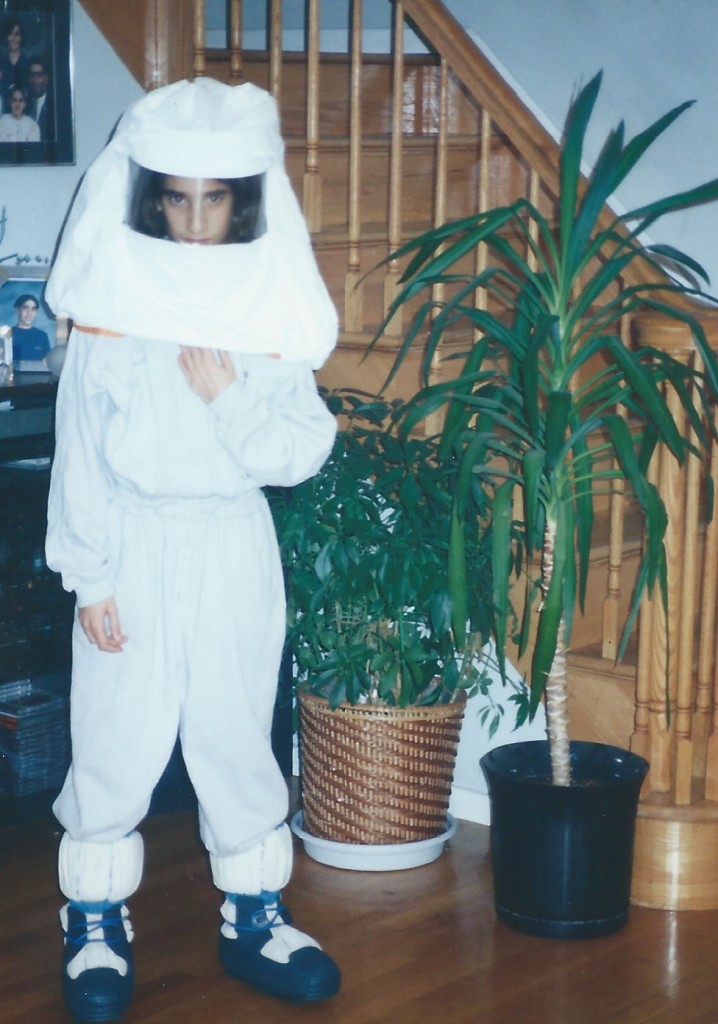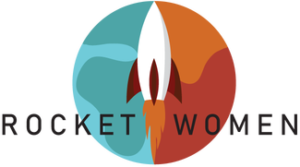![The Next Generation Of NASA Astronauts - Class of 2017 [NASA]](https://rocket-women.com/wp-content/uploads/2017/07/Picture1-e1501426487657-1024x639.jpg)
Three of the new NASA astronaut class were selected at 29 years old (Jessica Watkins, Kayla Barron and Zena Cardman), with Canadian Jenni Sidey 28 years old, making them some of the youngest astronaut candidates selected in history. If you think about it, that’s close to 10 years between completing Year 13 at secondary school or sixth form, to being selected as an astronaut!
![Trailblazing Canadian astronaut candidate Jenni Sidey at #Canada150 🇨🇦 celebrations at the Canadian Embassy in the UK with The Queen. [Copyright: High Commission of Canada in the United Kingdom]](https://rocket-women.com/wp-content/uploads/2017/07/jenni-sidey-london.jpg)
This exciting opportunity is pretty rare; although there have been many exceptional Canadian astronauts, including Chris Hadfield, the last recruitment campaign was in 2009. I applied in August but was hardly prepared for an experience as challenging, rewarding, and unique as the recruitment campaign. The CSA received 3772 applications and invited 100 qualified candidates for preliminary medicals. After that, the top 72 were put through intense physical, cognitive, memory, problem solving, teamwork, and survival tests. We’ve been tested on everything from our ability to fight fires and escape from helicopters underwater, to solving complex problems as teams.”
The class will begin two years of Basic Training this autumn at NASA’s Johnson Spaceflight Centre in Houston, Texas, learning how to fly jets, scuba dive, speak Russian, practice space walks and about the intricacies of the International Space Station. Until their graduation and completion of Basic Training they’ll be referred to as Astronaut Candidates, individuals who have been selected by NASA and the CSA to join the astronaut corps.
The idea of being able to be a face to others who may not see people who look like them in STEM fields in general, and doing cool things like going to space. I think that’s really important for that exposure, for young girls.
The 2017 class was importantly one of the most diverse selected, with expansive backgrounds in academia, military, geology, marine biology, engineering at Space X and medicine. Representation matters as NASA Astronaut Candidate Jessica Watkins explains to Syfy, “I think the thing about diversity is that it allows for experiences that may not be exactly the same to bring different things to the table. The idea of being able to be a face to others who may not see people who look like them in STEM fields in general, and doing cool things like going to space. I think that’s really important for that exposure, for young girls. It translates as well into racial diversity, that that type of exposure at a young age and also the stores of persistence become important.”
Here are five things that we can learn from the next generation of Rocket Women as they begin their Astronaut Training.
Prioritise Your Passion & Persevere
![Zena Caldman, NASA Astronaut Candidate [Image copyright: Robert Markowitz/NASA]](https://rocket-women.com/wp-content/uploads/2017/07/zena-caldman-ROBERT-MARKOWITZ-NASA1.jpg)
As she tells Mashable, “2015 was actually when this round opened. The astronauts who were selected in 2013, I didn’t apply that round because I wasn’t yet qualified. I was barely out of college. You need a STEM [science, technology, engineering, and math] degree and then at least three years of progressive experience after that, and I did not meet the bare minimum. Even this time, I thought, “Maybe I don’t technically meet the bare minimum requirement. I’m still in school. I’m still a student.” But I applied anyway, thinking, “I’ve got nothing to lose. This will be a really cool experience no matter what.” And then yeah, at every stage along the way, it’s just been, “Wow, what a cool experience, everyone has been awesome. I’ll try again next time.” And yeah, it just kept going!”
Zena Cardman prioritised her passion and persevered.
The morning of the [astronaut] announcement, when myself and my classmates put on our blue flight suits and our families saw us for the first time, the daughter of one of my classmates said, “Mommies can be astronauts too.” I think that really said something important about making sure that kids see that there are people of different backgrounds, different ethnicities, males, females, in these fields and it’s something they can do too.
The Importance Of Role Models
![NASA Astronaut Candidate Jessica Watkins [Image Copyright: NASA]](https://rocket-women.com/wp-content/uploads/2017/07/watkins-e1501429240291-1024x770.jpg)
On completing her basic training, Jessica Watkins will become the sixth African-American female NASA astronaut. Of these, only three women have flown to space, with the fourth astronaut Jeanette Epps, a former Central Intelligence Agency (CIA) Technical Intelligence Officer launching to the International Space Station in May 2018!
![Major Jasmin Moghbeli. NASA Astronaut Candidate [Photo Copyright: NASA]](https://rocket-women.com/wp-content/uploads/2017/07/moghbeli-e1501432008890-1024x723.jpg)
Talking to CNN‘s Christiane Amanpour, “[My background] was never specifically thought about as some sort of barrier or an obstacle in my way, but now on this side of things I can recognise how important it is to get out and make sure the next generations sees myself and my colleagues of all different backgrounds, all different experiences, so we don’t potentially lose a future brilliant mind because they assumed that only boys do this job, or only people of this ethnicity do this job, so I think now on this end I sense the importance of that…I think it’s very important for people to see.
You know, the morning of the announcement, when myself and my classmates put on our blue flight suits and our families saw us for the first time, the daughter of one of my classmates said, “Mommies can be astronauts too.” I think that really said something important about making sure that kids see that there are people of different backgrounds, different ethnicities, males, females, in these fields and it’s something they can do too.”

Pursue Something You Love
NASA Astronaut Candidate Zena Caldman believes that to be an astronaut or work in the space industry you have to study something that you love and are passion about. Telling The Verge, “You have to enjoy what you study and the work that you’re doing. Pay attention to what your passion is for.” To be an astronaut you have to firstly complete a Bachelor’s degree in engineering, biology, physics or mathematics. “That’s a really good concrete way to get started for anyone who wants to be an astronaut. But my main advice is just pursue something that you love. Because if you wake up curious and excited every morning, you’re going to be really happy no matter what the end result is, whatever career you wind up in. Just pursue whatever interests you. You know, I sit here in this blue flight suit, and I have to say it’s possible. So you just have to go for it.”
My main advice is just pursue something that you love. Because if you wake up curious and excited every morning, you’re going to be really happy no matter what the end result is, whatever career you wind up in. Just pursue whatever interests you. You know, I sit here in this blue flight suit, and I have to say it’s possible. So you just have to go for it.
Find A Mentor
Sometimes you need somebody who you trust and sees your potential, telling you to just apply for that opportunity. You need somebody to push you past that self-critical stage and to say, “Yes, you’re ready.”
That idea of persistence, having a mentor who can continue to push you and encourage you in a STEM field is really helpful.
NASA Astronaut Candidate Jessica Watkins believes that finding a mentor is essential. As she tells Syfy, “I would say get a mentor, ideally a female mentor, although male mentors are great as well. That is something that has really pushed me to this point in my life. I’ve been really grateful and lucky to have the mentorship support that I’ve received from a lot of my teachers and professors and supervisors. That’s been something that’s really important for me, and I think help with that idea of persistence, having a mentor who can continue to push you and encourage you in a STEM field is really helpful.”
Maintaining Resilience When Challenged
![Jenni Sidey among the top 17 candidates of the 2017 astronaut recruitment campaign are announced during a press conference in Toronto, Ontario. [Image Credit: Canadian Space Agency]](https://rocket-women.com/wp-content/uploads/2017/07/2017-astronaut-selection-process-jenni-1024x683.jpg)
The next generation of Rocket Women are set to fly Space X and Boeing‘s commercial vehicles to the International Space Station (ISS) and even explore the Moon and Mars in the coming years. In the words of NASA Astronaut Candiate Major Jasmin Moghbeli, “Right now, we’re talking about going further in the solar system as we’ve ever gone before and to me, at the end of the day, the Earth is just a tiny planet, and it’s necessary for our survival to go somewhere further. This won’t last forever, and so in any way I can contribute to that, whether it’s to go to the Moon, Mars or somewhere else, I’m eager and excited to do so and it would be an honour for me.”
